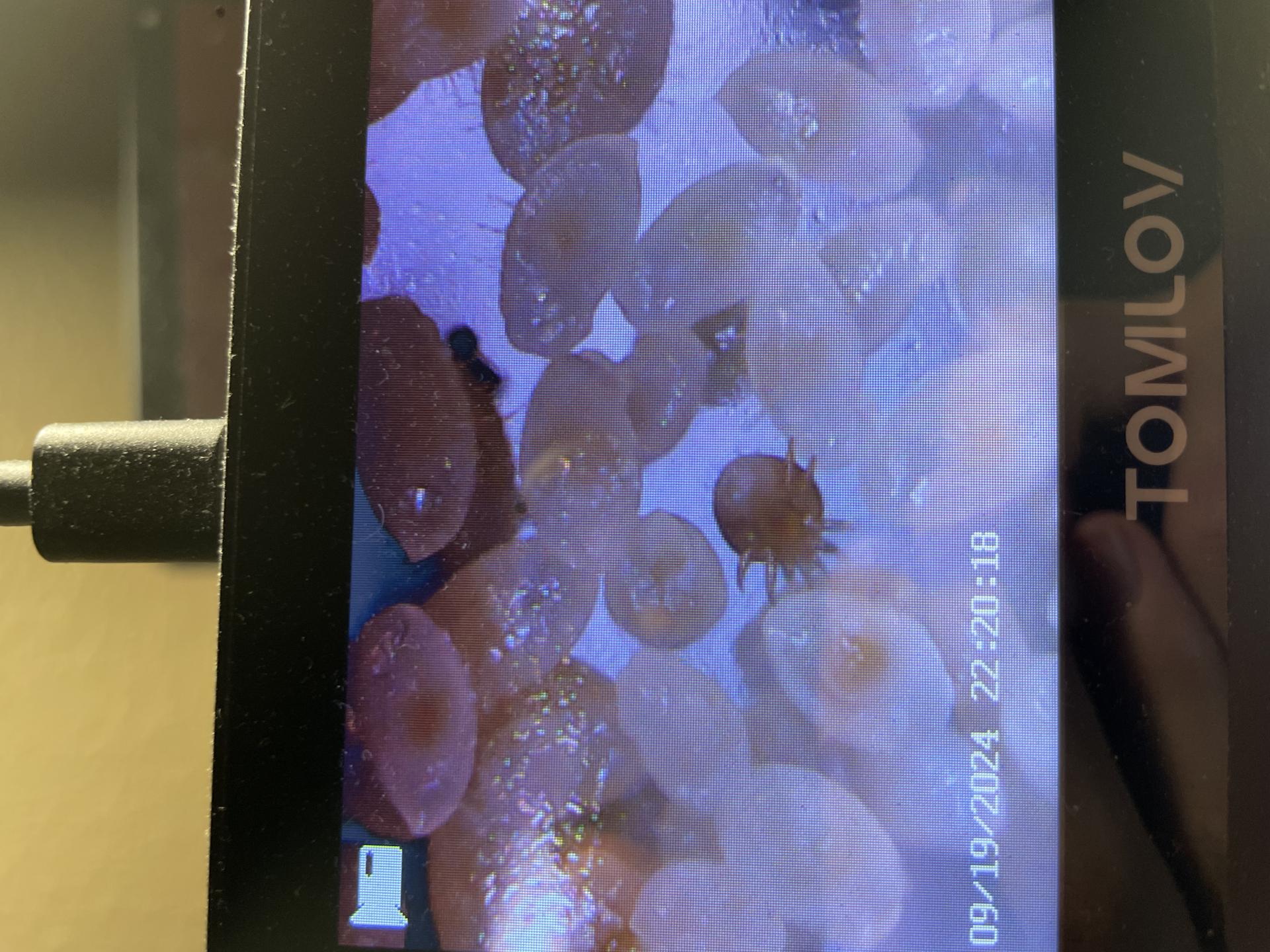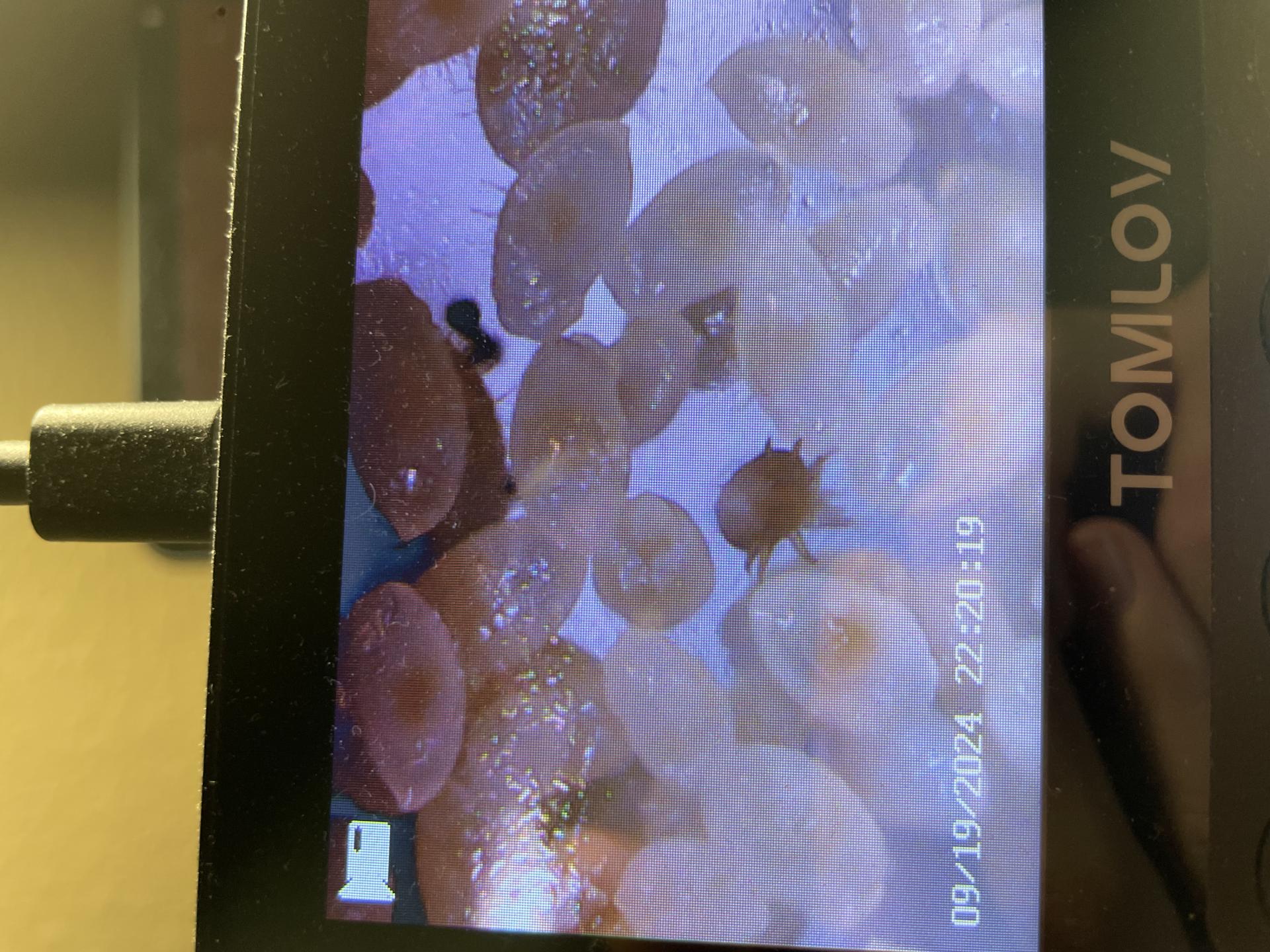Hello, I think they aré probably eating the larvae, here Is some info about how to end with mites.
1. The ants own weapons work very well against mites.
Formic acid is one of the most effective ways to remove mites from your ants. Some Bee keepers use formic acid to keep the varroa mite away or even remove them from an infested bee hives, with great success.
Things you need:
-A clean outworld, no substrate or anything else, just bare glass!
-Formic acid from the pharmacy
-a drinking glass
-cotton buds
-if possible feather forceps
To effectively use this method without killing your ants, we are aiming at a concentration of 70%. Add water to the acid to reach that concentration.
Safety first! Pure Formic acid is very aggressive, don't breathe it in and don't touch your face, especially your eyes when you use this method!
The setup is very easy, it is some work though depending on the size of the colony.
Get the drinking glass and put 1 ant into it.
Now dip the cotton bud into the formic acid solution and hold it into the drinking glass. Don't let the ant touch or bite it or she will die!
The fumes are heavier than air and drop onto the ground of the drinking glass. The ant won't like it at all, but more importantly, the mites won't like it aswell. They quickly leave the ant alone and fall to the ground. You can then pick the ant up again and put her into the clean outworld. Just hold a clean cotton bud next to her to climb on, don't touch the ground with it so no mites climb onto it. Toss the ant into the outworld and move on with the next one. If she doesn't fall off just drop the whole cotton ball into it and use a new one for the next ant to climb on. This method is a time consuming process and we want to save time where we can.
Make sure to kill the mites in the glass afterwards. Just dump them into a bowl of hot water.
Repeat this process with every single ant.
For the brood you can do the same thing, just pick them up with the feather forceps afterwards and put them into a separate small container. After the whole process check the brood for remaining mites and if they are clean, give them back to your ants.
You have to clean their old outworld very good. Use hot water for the outworld and let it dry out for a few days. All remaining mites will die. Clean it again with hot water to make sure it is absolutely clean and there are no eggs left.
If you used a ytong, wood or plaster nest, dump it, really!
Just build a new one to be on the safe side.
Don't forget to clean the tubing with hot water or just use new tubing.
Keep the colony in the empty outworld for 2 days, give them a place to hide their brood though. A small plastic box with a hole in it is fine.
If you are sure there are no mites left, put the ants into a completely new setup.
If there are a few mites left, treat the affected ants or the whole colony again.
I know this is time consuming, but it is the most promising method.
IMPORTANT!
Test this method with a few ants and observe them closely in an extra container for a few hours before you move on with the whole colony.
If they show any signs that the process harmed them or even die, don't treat the rest of the colony. This method is not suitable for your species!
2. Oxalic acid is also used by beekeepers to kill the varroa mite.
You can find it in beekeeping shops.
Prepared the way it is intended to be used (read the manual), the solution is sprayed directly onto the ants. If the mites are not covered by the solution immediately, the grooming of the ants will take care of that.
It is important not to drench the ants with the solution, just use a spray bottle or mister to spray it onto the ants.
Use an empty outworld or plastic container with Paper towels on the ground to absorb the remaining solution so the ants don't drown.
As always, test this method with just a few infested workers before using it to treat your colony.
3. Pericine, found in most beekeeping shops, is a very good working medication for bees against mites.
The ants consume the pericine diluted in sugar water. It enters their digestive system and eventually reaches the hemolymph, which is what parasitic mites feed on.
The mites die within a few hours.
I have not tested this method, I would have if I had a colony with mites at the moment. Pericine is pretty expensive! Also read the manual if you want to experiment with it. The pericine has to be further diluted before mixing it with sugar water.
As both bees and ants belong to the Hymenoptera family and pericine doesn't harm the bee's, I am pretty sure this won't harm ants aswell.
4. Diatomaceous earth can also be used to get a colony mites free again.
The procedure is simple. Put the ants into a container with a small amount of diatomaceous earth and shake it gently to cover the ants with the dust. After that, put the ants onto a damp cloth or cotton pad and use a dripping wet q-tip or paintbrush to brush the remains off. The whole process has to be very quickly, it must not take more than one minute. Always treat only as much ants with the dust as you are able to brush off afterwards within that time and of course, as always, test it with a few workers before treating the whole colony.
Diatomaceous earth punctures the very thin layer of wax on the exoskeleton of both the ants and the mites. It can also block the trachea of both these insects, which is why it is so important to be very fast with brushing the remains off the ants. The mites die instantly due to dehydration and the amount of time an ant would die is just marginally bigger.
Here Is the link to where I found this info
https://www.formicul... from your ants.
Edited by ruth, September 20 2024 - 12:48 AM.




















